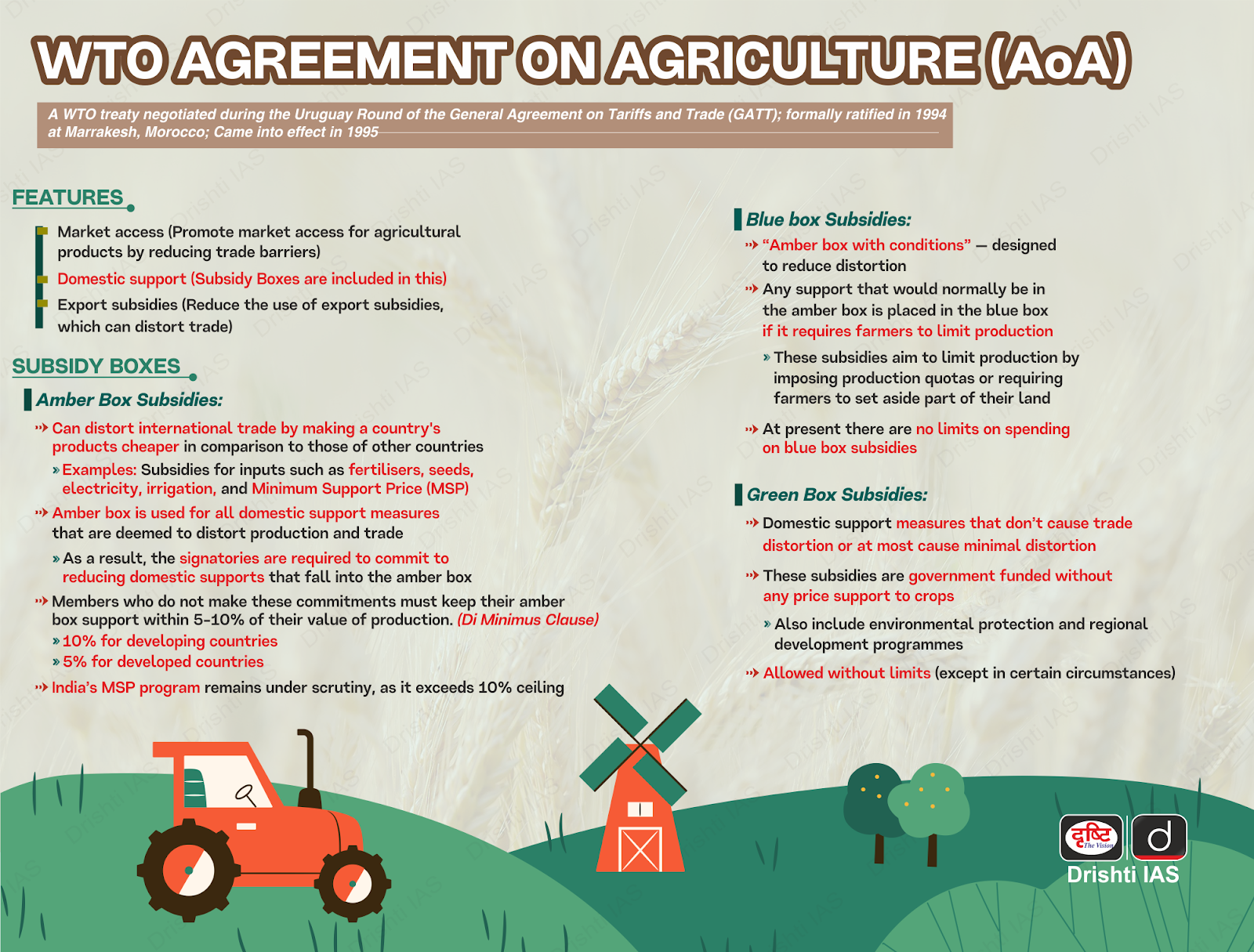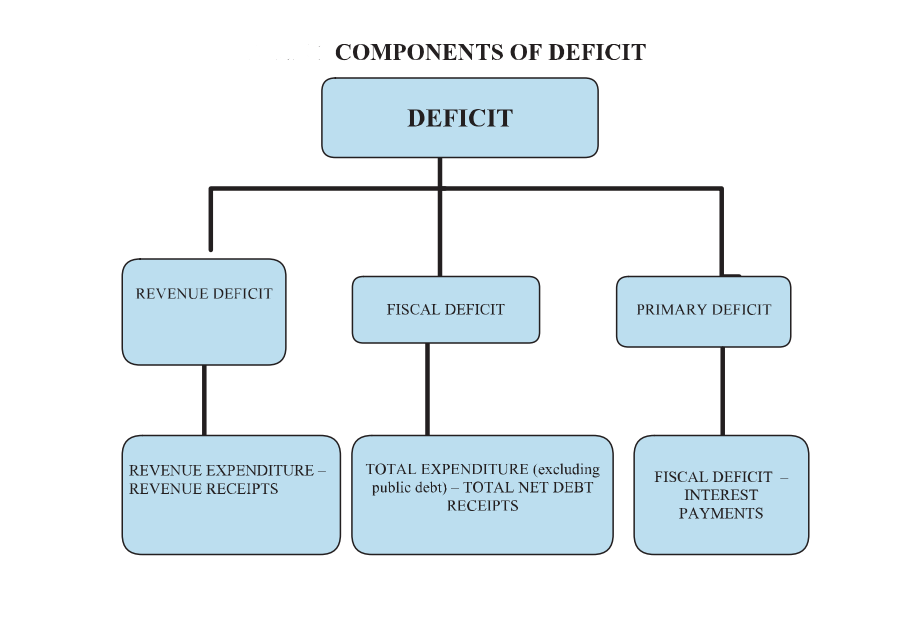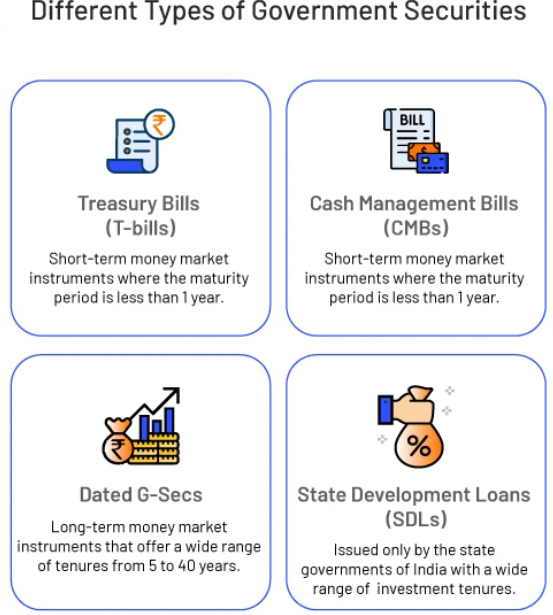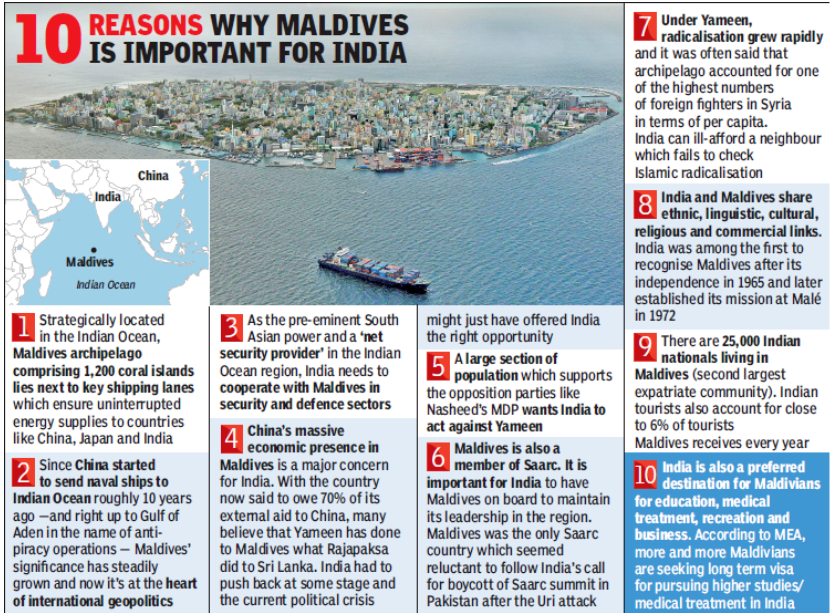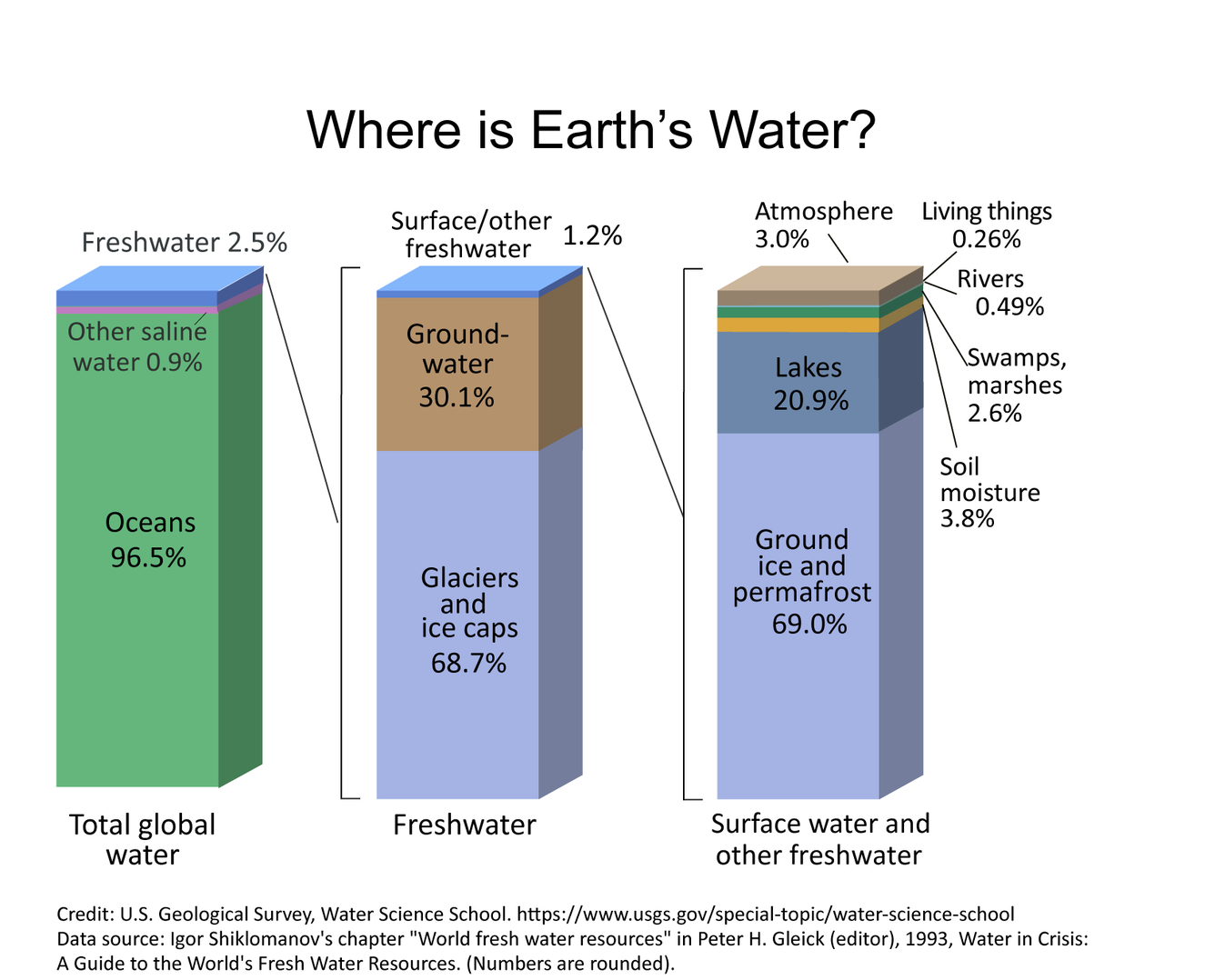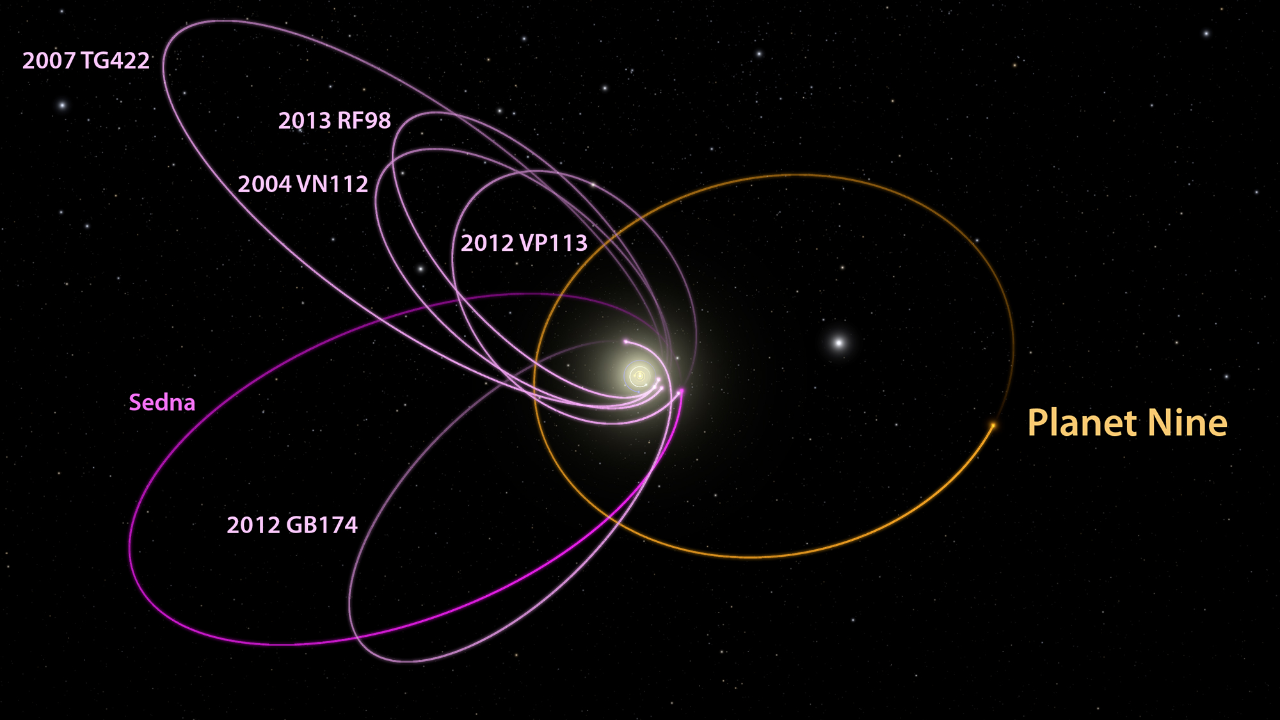Governance
Reforming Agricultural Subsidies
For Prelims: Agricultural Subsidies, PM-KISAN, Pradhan Mantri Krishi Sinchayee Yojana, Nutrient-Based Subsidy (NBS), Pradhan Mantri Fasal Bima Yojna, MSP, Food Corporation of India, Agriculture Marketing Infrastructure Fund (AMIF), Pradhan Mantri Garib Kalyan Anna Yojana, Per Drop More Crop (PDMC), Shanta Kumar Committee (2015), World Trade Organization (WTO), Zero Budget Natural Farming (ZBNF).
For Mains: Need and challenges related to agricultural subsidies, Types of agricultural subsidies, Ways to reform agricultural subsidies.
Why in News?
The Vice President stated that direct transfer of agricultural subsidies could significantly boost farmers' income, estimating each could receive at least Rs 35,000 annually if all aid reaches them directly (instead of indirect subsidies).
What are the Various Types of Agricultural Subsidies in India ?
- Direct Benefit Transfer (DBT): It provides direct income support in form of cash transfers to farmers. E.g., PM KISAN, Rythu Bandhu (Telangana), KALIA (Odisha).
- Input Subsidies:
- Fertilizer Subsidy: It makes fertilizers like urea affordable by paying the difference between production cost and selling price. E.g., Di-Ammonium Phosphate (DAP) fertiliser, Nutrient-Based Subsidy (NBS) scheme for non-urea fertilizers.
- Seed Subsidy: It offers high-yielding, disease-resistant seeds at subsidized rates, e.g., Seed Village Program, Seed Bank, Mukhyamantri Beej Swavalamban Yojana in Rajasthan.
- Irrigation Subsidy: The irrigation subsidy, under PM Krishi Sinchai Yojana (PMKSY), offers up to 55% support for drip and sprinkler systems to promote water conservation.
- Power Subsidy: It provides free or subsidized electricity for agricultural pumps, with states like Punjab offering free electricity to tubewell irrigation, though this has raised concerns about groundwater depletion.
- Credit & Insurance Subsidies:
- Pradhan Mantri Fasal Bima Yojna (PMFBY): PMFBY protects farmers from crop failure by requiring them to pay a 1.5-5% premium, with the government covering the remaining cost.
- Interest Subvention Scheme: Under the Modified Interest Subvention Scheme, farmers get short-term loans up to Rs 3 lakh via Kisan Credit Card at a 7% subsidised interest rate, with a 1.5% subvention to eligible lending institutions.
- Output Subsidies (Price Support):
- Minimum Support Price (MSP): MSP guarantees minimum prices for 22 crops like wheat, rice, pulses, and oilseeds, and fair and remunerative price (FRP) for sugarcane, procured by agencies such as Food Corporation of India (FCI) and NAFED.
- Also, state level schemes like Bhavantar Bhugtan Yojana (Madhya Pradesh) compensate farmers if market prices fall below MSP.
- Minimum Support Price (MSP): MSP guarantees minimum prices for 22 crops like wheat, rice, pulses, and oilseeds, and fair and remunerative price (FRP) for sugarcane, procured by agencies such as Food Corporation of India (FCI) and NAFED.
- Infrastructure & Post-Harvest Subsidies:
- Warehouse & Cold Storage Subsidy: The National Horticulture Board (NHB) offers a capital investment subsidy scheme providing a credit-linked back-ended subsidy of 35% in general areas and 50% in North East, hilly, and scheduled areas for building or modernizing cold storage facilities with capacities between 5,000 and 10,000 million tonnes.
What are the Consequences of Agricultural Subsidies in India?
- Fiscal Burden on Government: The Union Budget 2025–26 has allocated Rs 3.71 lakh crore for food and fertiliser subsidies and as of January 2025, over Rs 3.46 lakh crore has been disbursed to more than 11 crore PM-KISAN beneficiary farmers.
- It strains public finances and worsen the debt crisis for fiscally stressed states like Punjab.
- Soil Degradation: India’s consumption ratio of nitrogen, phosphorus and potassium (NPK) is 6.7:2.4:1 (ideal of 4:2:1), leading to soil toxicity & declining yields.
- Punjab & Haryana have the highest urea consumption, causing groundwater pollution & cancer clusters.
- Groundwater Depletion: Free electricity encourages excessive tube-well use, depleting groundwater table.
- Agriculture consumes 87% of India’s groundwater, with extraction exceeding 100% in states like Punjab, Rajasthan, Haryana, and Delhi in 2024.
- Market Distortions: The Shanta Kumar Committee (2015) reported that only 6% of farmers—mainly in Punjab, Haryana, and Andhra Pradesh—actually benefit from MSP. This skewed procurement has led to overproduction of rice and wheat while pulses and oilseeds remain underproduced.
- In 2024, the FCI had to dispose of 18 million tonnes of rotting grains, causing a waste of taxpayer money.
- Hurt Export Competitiveness: World Trade Organization (WTO) rules limit India’s farm export subsidies, affecting trade.
- Developed countries, led by the US, accuse India of providing up to 93.9% subsidy to rice farmers in 2020–21, breaching the 10% limit set under WTO rules.
What are the Advantages and Limitations of Replacing Agricultural Subsidies with Direct Benefit Transfers?
|
Advantages |
Limitations |
|
Improved Targeting: Ensures subsidies reach only eligible farmers, reducing leakage and inefficiency. |
Exclusion Risks: Small or marginal farmers without proper documentation may be left out. |
|
Increased Transparency: Direct payments reduce intermediaries, lowering corruption and misallocation. |
Digital Divide: Reliance on banking and digital infrastructure may disadvantage remote or unbanked farmers. |
|
Promotes Farmer Autonomy: Farmers have freedom to decide how to use funds, encouraging diversified investment. |
Misuse of Funds: Transfers may be spent on non-agricultural needs, diluting the intended impact on productivity. |
|
Reduces Market Distortion: Avoids overuse or misuse of inputs like fertilizers and power by unlinking subsidies from physical inputs. |
Price Volatility Exposure: Without input subsidies, farmers may face higher costs during price spikes, increasing vulnerability. |
|
Administrative Efficiency: Lowers cost and complexity of managing large input subsidy programs. |
Implementation Challenges: Requires robust beneficiary identification, grievance redressal, and monitoring systems. |
How can India Reform its Agricultural Subsidies?
- Targeted Direct Benefit Transfers (DBT) with Geo-Tagging: Subsidy allocation should balance input subsidies with precision-targeted DBT using geo-tagging and farmer identification technologies in project mode and scale in phased-wise manner.
- It will reduce leakage, aiding smallholders, promoting financial inclusion, and encouraging efficient resources and build upon Shanta Kumar Committee’s (2014) recommendation to shift from grain-based distribution to cash transfers.
- Market-Responsive MSP Reform: Reform MSP into a dynamic, market-responsive system using real-time data on input costs, demand-supply, and regional prices. Ensure transparency by publishing the pricing method and involving farmers and experts to prevent issues like the 2020 farm protests.
- Green Subsidy Transformation: To promote sustainable agriculture, restructure power and fertilizer subsidies by directly linking them to adoption of water-efficient technologies like drip and micro-irrigation systems under programs like the Per Drop More Crop (PDMC) initiative.
- Phase out subsidies for water-intensive crops and incentivize diversification with tailored support to boost agro-biodiversity, conserve groundwater, and match regional agro-climates.
- Post-Harvest Infrastructure: Increase Agriculture Mechanization and Infrastructure Fund (AMIF) subsidies to curb post-harvest losses and incentivize agro-processing units near farms to boost value addition and farmer incomes.
- Localized infrastructure boosts farmer incomes by capturing higher market value, reducing reliance on distant markets, and strengthening agricultural supply chains.
- WTO-Compliant Subsidy Reforms: Shift subsidies to non-trade-distorting areas like agricultural R&D, extension services, rural infrastructure, and capacity building, aligning with WTO rules, while advocating higher subsidy ceilings for developing countries to protect smallholders and boost exports.
- Additionally, adopting the Kelkar Committee’s (2012) suggestion to reduce subsidies on fuel, food, and fertilizers is essential to curb excessive public spending.
Conclusion
India’s agricultural subsidies though beneficial need urgent reforms to balance farmer welfare with fiscal and environmental sustainability. Shifting to direct cash transfers, rationalizing MSP, promoting sustainable farming, and investing in post-harvest infrastructure can enhance efficiency while reducing distortions. WTO-compliant policies and crop diversification will ensure long-term food security, farmer prosperity, and ecological balance.
|
Drishti Mains Question: Q.Examine the role of agricultural subsidies in ensuring food security in India. Should subsidies be continued in their current form? |
UPSC Civil Services Examination, Previous Year Questions (PYQs)
Prelims
Q. With reference to chemical fertilizers in India, consider the following statements: (2020)
- At present, the retail price of chemical fertilizers is market-driven and not administered by the Government.
- Ammonia, which is an input of urea, is produced from natural gas.
- Sulphur, which is a raw material for phosphoric acid fertilizer, is a by-product of oil refineries.
Which of the statements given above is/are correct?
(a) 1 only
(b) 2 and 3 only
(c) 2 only
(d) 1, 2 and 3
Ans: (b)
Mains
Q. How do subsidies affect the cropping pattern, crop diversity and the economy of farmers? What is the significance of crop insurance, minimum support price and food processing for small and marginal farmers? (2017)
Q. In what way could replacement of price subsidy with direct benefit Transfer (DBT) change the scenario of subsidies in India? Discuss. (2015)
Q. What are the different types of agriculture subsidies given to farmers at the national and at state levels? Critically, analyse the agricultural subsidy regime with reference to the distortions created by it. (2013)


Indian Economy
India Achieves Fiscal Deficit Target of 4.8% for FY25
For Prelims: Gross Domestic Product, Controller General of Accounts, inflation, Revenue deficit, Goods and Services Tax, National debt
For Mains: Fiscal Deficit, Fiscal Consolidation, Fiscal Policy and its Role in Economic Stability
Why in News?
The Government of India has successfully met its fiscal deficit target of 4.8% of Gross Domestic Product (GDP) for the financial year 2024–25, as revealed in the provisional data released by the Controller General of Accounts (CGA).
Note: The CGA, under the Department of Expenditure, Ministry of Finance, is the Principal Accounting Adviser to the Government of India.
- The CGA manages the government’s accounting system, prepares fiscal reports, and submits Union Finance and Appropriation Accounts to Parliament under Article 150.
- It also enhances transparency and efficiency in public fund management through integrated, IT-enabled financial systems and conducts internal audits to assess risk management, control mechanisms, and governance processes.
What is the Fiscal Deficit?
- About: Fiscal Deficit is the difference between the government's total expenditure and its total receipt (excluding borrowings) in a given fiscal year.
- Fiscal Deficit= Total Expenditure- Total Receipts (excluding borrowings). Total receipts include revenue receipts and capital receipts (both debt and non-debt creating).
- Non-debt creating capital receipts are those that neither involve borrowings nor result in future repayment obligations. Examples include recovery of loans and proceeds from disinvestment of Public Sector Undertakings (PSUs).
- Fiscal Deficit is usually expressed as a percentage of GDP to assess its impact on the broader economy.
- It indicates how much the government needs to borrow to meet its expenses when its income is insufficient.
- Fiscal Deficit= Total Expenditure- Total Receipts (excluding borrowings). Total receipts include revenue receipts and capital receipts (both debt and non-debt creating).
- Implications of Fiscal Deficit: A manageable fiscal deficit helps ensure macroeconomic stability.
- A higher fiscal deficit increases borrowing needs, leading to a rising debt burden and inflationary pressures.
- It can cause the crowding out effect, where private investment declines due to higher borrowing costs.
- Over time, it reduces fiscal space, limiting the government's ability to spend on development, and may weaken investor confidence and macroeconomic stability, potentially increasing debt levels.
- A higher fiscal deficit increases borrowing needs, leading to a rising debt burden and inflationary pressures.
- India’s Fiscal Deficit: In FY 2024–25 fiscal deficit stood at Rs 15.77 lakh crore, amounting to 4.8% of GDP.
- Revenue Collections: Total revenue receipts, comprising tax, non-tax, and capital revenues, amounted to Rs 30.78 lakh crore.
- Expenditure: Total expenditure for 2024–25 stood at Rs 46.55 lakh crore. Capital expenditure reached Rs 10.52 lakh crore, while revenue expenditure (salaries, subsidies, pensions) was Rs 36.03 lakh crore.
- The government has now laid out a tighter target of 4.4% fiscal deficit for FY 2025–26.
- Fiscal Deficit and National Debt: National debt represents the cumulative borrowing by a government to finance past fiscal deficits.
- It includes liabilities like domestic/external loans, small savings, provident funds, and special securities requiring regular interest and principal repayments.
- India’s total outstanding debt is projected to rise to Rs 196.78 lakh crore by end of FY 2025–26, up from Rs 181.74 lakh crore in FY 2024–25.
Types of Deficit
- Revenue Deficit: This deficit of a government or business can be determined by subtracting the total revenue receipts from the total income expenditure.
- Revenue deficit = Total revenue receipts – Total revenue expenditure.
- Effective Revenue Deficit = Revenue Deficit - grants for capital asset creation.
- Primary Deficit: It occurs when a government's spending, excluding interest payments, is greater than its revenue from non-interest sources.
- Primary Deficit = Fiscal Deficit – Interest Payments.
- Twin Deficits: It refers to a situation where a country simultaneously experiences a fiscal deficit and a current account deficit (when imports exceed exports).
What are the Factors that Influence the Fiscal Deficit?
- Fiscal Policy: It involves government decisions on taxation and spending, directly impacting the fiscal deficit.
- Expansionary Fiscal Policy (More Spending / Less Taxes): Used when the economy is slow or in recession. The government spends more (like on jobs or infrastructure) or reduces taxes to increase people’s income.
- But this leads to a higher budget deficit, since earnings (revenue) are lower than expenses.
- Contractionary Fiscal Policy (Less Spending / More Taxes): Used when the economy is overheating or when debt is too high. The government spends less or increases taxes.
- This helps to reduce the deficit, as spending and income become more balanced.
- Expansionary Fiscal Policy (More Spending / Less Taxes): Used when the economy is slow or in recession. The government spends more (like on jobs or infrastructure) or reduces taxes to increase people’s income.
- Economic Cycles: During recessions, deficits increase as governments spend more and tax revenues fall. During booms, higher revenues and controlled spending help reduce deficits.
- Unexpected Events: Natural disasters, wars, or pandemics often cause sudden rises in government spending, increasing the deficit.
- Inefficient Tax Collection: When tax systems are weak or compliance is low, governments collect less revenue than expected, widening the fiscal deficit.
- Global Factors: Inflation, commodity price shifts, and changes in trade affect revenues and spending, influencing deficits.
What are India’s Initiatives to Achieve Fiscal Consolidation?
- Fiscal Responsibility and Budget Management (FRBM) Act, 2003: It was enacted to institutionalize financial discipline by setting targets for fiscal deficits and public debt.
- FRBM Act amended in 2018, it defined the debt-to-GDP ratio (total debt of a country relative to its GDP) as the primary fiscal anchor, aiming to reduce the fiscal deficit and the debt-to-GDP ratio.
- Glide Path for Fiscal Deficit Reduction: Following the Covid-19 pandemic, India adopted a "glide path" approach to fiscal consolidation, in line with the recommendations of the N.K. Singh Committee (2017).
- This approach aims for a gradual reduction of the fiscal deficit, balancing the need for economic support with long-term fiscal discipline.
- It led to a planned decrease in the fiscal deficit from 6.7% of GDP in 2020-21 to 4.8% in 2024-25.
- Increased Capital Expenditure (Capex): India has significantly increased its capital expenditure (capex) over the past few years, rising from 1.6% of GDP in FY 2014-15 to a planned 3.1% of GDP in FY 2025-26.
- This focus on infrastructure development aims to stimulate economic growth and improve long-term fiscal health.
- Revenue Mobilization: Efforts to enhance revenue collection include implementing the Goods and Services Tax (GST) to create a unified tax base and digitizing the tax system.
- As a result, India’s direct tax collections rose 16.15% year-on-year to Rs 25.86 lakh crore in FY 2024-25.
- State-Level Fiscal Responsibility: States have been encouraged to adopt their own fiscal responsibility legislations (FRLs) to complement the central government's efforts.
- The Reserve Bank of India (RBI) has recommended that states with elevated debt levels establish a path for debt consolidation aligned with macroeconomic objectives.
Fiscal Consolidation
- It refers to the responsible management of government finances to ensure long-term economic stability.
- It aims to balance revenue (tax and non-tax) with expenditure, minimizing fiscal deficits and maintaining sustainable public debt.
- Fiscal consolidation promotes macroeconomic stability by controlling inflation and exchange rate volatility, reduces the debt burden on future generations, builds investor confidence, and ensures efficient use of public resources for development.
|
Drishti Mains Question: Q. What is the fiscal deficit? Critically analyze India’s fiscal performance in FY 2024–25 in light of the government’s target. |
UPSC Civil Services, Previous Year Questions (PYQ)
Prelims
Q. Suppose the revenue expenditure is 80,000 crores and the revenue receipts of the Government are 60,000 crores. The Government budget also shows borrowings of 10,000 crores and interest payments of 6,000 crores. Which of the following statements are correct? (2025)
- Revenue deficit is 20,000 crores.
- Fiscal deficit is 10,000 crores.
- Primary deficit is 4,000 crores.
Select the correct answer using the code given below.
(a) I and II only
(b) II and III only
(c) I and III only
(d) I, II and III
Ans: (d)
Q. A country's fiscal deficit stands at 50,000 crores. It is receiving 10,000 crores through non-debt creating capital receipts. The country's interest liabilities are 1,500 crores. What is the gross primary deficit? (2025)
(a) 48,500 crores
(b) 51,500 crores
(c) 58,500 crores
(d) None of the above
Ans: (a)
Q. Which one of the following is likely to be the most inflationary in its effect? (2021)
(a) Repayment of public debt
(b) Borrowing from the public to finance a budget deficit
(c) Borrowing from the banks to finance a budget deficit
(d) Creation of new money to finance a budget deficit
Ans: (d)
Mains
Q1. One of the intended objectives of the Union Budget 2017-18 is to ‘transform, energise and clean India’. Analyse the measures proposed in the Budget 2017-18 to achieve the objective. (2017)
Q2. Distinguish between Capital Budget and Revenue Budget. Explain the components of both these Budgets. (2021)
Q.3 Do you agree with the view that steady GDP growth and low inflation have left the Indian economy in good shape? Give reasons in support of your arguments. (2019)


Important Facts For Prelims
India Rolls Over USD 50 Million Treasury Bill to Support Maldives
Why in News?
India has extended financial support to the Maldives by rolling over (renewing) a USD 50 million Treasury Bill, under a special government-to-government (G2G) framework that began in 2019.
What are the Significant Dimensions of India-Maldives Bilateral Relations?
- Historical Ties: India recognized Maldives in 1965 and established its mission in Malé in 1972. Both are founding members of SAARC and signatories to SAFTA.
- Trade and Economy: India and Maldives signed a trade agreement in 1981, boosting bilateral trade.
- In 2024, India extended USD 400 million in support and a bilateral currency swap of Rs 3,000 crore to the Maldives, reinforcing its economic assistance.
- Additionally, the SBI rolled over USD 100 million of Treasury Bills for the Maldives.
- India became the Maldives' 2nd largest trade partner in 2022 and the largest in 2023.
- Visa-free entry for Indian business travelers in 2022 further enhanced commercial relations.
- In 2024, India and the Maldives have finalized a framework to promote the use of local currencies for cross-border trade.
- Tourism & Culture: Tourism forms 25% of Maldives’ GDP and 70% of employment, with India as the top tourist source since 2020. The 2022 open skies agreement enhanced air connectivity.
- Defence Partner: Under India’s Neighborhood First policy and SAGAR (now MAHASAGAR) initiatives, India has provided critical defence support including Operation Cactus (1988).
Note
- Eight Degree Channel separates Indian Minicoy (part of Lakshadweep Islands) from that of Maldives.
What are Treasury Bills (T-Bills)?
- T-Bills are short-term debt instruments issued by the Government of India through the Reserve Bank of India (RBI).
- They form part of Government Securities (G-Secs) and help raise short-term funds.
- These are zero-coupon securities, meaning they do not pay periodic interest. Instead, they are issued at a discount and redeemed at face value on maturity.
- G-Secs are tradable debt instruments issued by the Central or State Governments to borrow funds from the public with a contractual obligation to repay the principal on a specified date.
- They are issued with maturities of 91, 182, and 364 days and are sold at a discount from their face value. Investors earn returns from the difference between the purchase price and maturity amount.
- They are issued through RBI auctions via competitive and non-competitive bidding and offer high liquidity due to their short tenure.
- Gains from T-Bills are taxable as short-term capital gains, and their fixed returns may be eroded by inflation.
UPSC Civil Services Examination, Previous Year Question (PYQ)
Q. In the context of Indian economy, ‘Open Market Operations’ refers to (2013)
(a) borrowing by scheduled banks from the RBI
(b) lending by commercial banks to industry and trade
(c) purchase and sale of government securities by the RBI
(d) None of the above
Ans: (c)
Q2. In the context of the Indian economy, non-financial debt includes which of the following? (2020)
- Housing loans owed by households
- Amounts outstanding on credit cards
- Treasury bills
Select the correct answer using the code given below:
(a) 1 only
(b) 1 and 2 only
(c) 3 only
(d) 1, 2 and 3
Ans: (d)


Important Facts For Prelims
Neurodegenerative Diseases
Why in News?
Recent research by National Centre for Biological Sciences (NCBS-TIFR) and other studies has revealed that neurodegenerative diseases may start long before symptoms appear, driven by blood vessel dysfunction and abnormal protein activity in the brain.
- This new understanding moves the focus from direct neuron damage to early vascular and molecular changes, paving the way for earlier diagnosis and prevention.
What are Neurodegenerative Diseases?
- About:
- Neurodegenerative Diseases are a group of disorders in which the brain and nerve cells (neurons) gradually break down or die over time.
- This leads to problems with memory, movement, speech, and other important body functions.
- These diseases usually get worse over time and currently have no complete cure, though treatments can help manage symptoms.
- Neurodegenerative Diseases are a group of disorders in which the brain and nerve cells (neurons) gradually break down or die over time.
- Common Examples:
- Alzheimer's Disease, which affects memory and thinking.
- Parkinson’s Disease, which affects movement and balance.
- Amyotrophic Lateral Sclerosis (ALS), which affects nerve cells (motor neurons) in the brain and spinal cord, which control voluntary muscle movement.
- Huntington’s Disease, which causes nerve cells in the brain to decay over time
- Guillain-Barre syndrome, a serious autoimmune disorder that affects the peripheral nervous system.
What does Recent Research Reveal about Early Causes of Neurodegenerative Diseases?
- Vascular Dysfunction and Blood-Brain Barrier (BBB) Breakdown: The BBB is a protective layer formed by tightly connected cells lining brain blood vessels, regulating what enters the brain. Damage to this barrier, caused by dysfunction of the protein TDP-43, leads to leakage that allows harmful substances to enter, causing inflammation and neuron loss.
- Studies in mice show these vascular changes occur early, before symptoms, suggesting blood vessel damage is a key early factor in neurodegeneration.
- Intracellular Membrane Signaling Failure (Esyt Protein Dysfunction): Neurons depend on membrane contact sites between the plasma membrane and endoplasmic reticulum for transferring essential molecules like lipids and calcium, crucial for cell signaling and survival.
- The Esyt protein regulates this process by binding calcium. When Esyt function is impaired, this signaling breaks down, disrupting neuron health and potentially initiating degeneration.
What are the Key Factors Contributing to Neurodegenerative Diseases?
- Genetic Factors: Mutations in specific genes disrupt normal neuronal function and repair, increasing susceptibility to degeneration. These mutations may be inherited or arise spontaneously.
- Protein Abnormalities: Misfolded proteins, such as amyloid-beta in Alzheimer’s disease or alpha-synuclein in Parkinson’s disease, accumulate and interfere with cell function, triggering neuronal toxicity and progressive damage.
- Oxidative Stress: Excess free radicals cause damage to neuronal DNA, proteins, and membranes. When antioxidant defenses are overwhelmed, this accelerates neuronal cell death.
- Mitochondrial Dysfunction: Impaired mitochondria produce insufficient energy and release harmful byproducts, compromising neuron survival and promoting degeneration.
- Chronic Inflammation: Persistent inflammation in the brain activates immune cells that can damage neurons, exacerbating disease progression.
- Environmental Factors: Exposure to toxins like pesticides, heavy metals, or infections can induce cellular stress and damage, raising the risk of neurodegeneration.
- Ageing: The natural ageing process weakens cellular repair and waste clearance systems, making neurons more vulnerable to damage and loss over time.
Neurodegenerative Diseases V/s Neurological Disorders
- Neurological disorders are a broader category of disorders affecting the nervous system, including the brain, spinal cord, and peripheral nerves and may be acute or chronic.
- Eg: Stroke, epilepsy, and meningitis.
- Many neurological conditions are treatable or reversible with timely intervention. Eg: Stroke (Ischemic Stroke).
- Neurodegenerative diseases are a subset of neurological disorders characterized by the progressive and irreversible loss of structure or function of neurons, often due to abnormal protein accumulation, genetic factors, or oxidative stress.
- They are largely incurable and managed symptomatically.
UPSC Civil Services Examination Previous Year Question
Q. Consider the following statements:
- Genetic changes can be introduced in the cells that produce eggs or sperms of a prospective parent.
- A person’s genome can be edited before birth at the early embryonic stage.
- Human induced pluripotent stem cells can be injected into the embryo of a pig.
Which of the statements given above is/are correct?
(a) 1 only
(b) 2 and 3 only
(c) 2 only
(d) 1, 2 and 3
Ans: (d)


Place In News
New Caledonia
France’s recent effort to establish a new political agreement for New Caledonia has been unsuccessful, increasing uncertainty about the territory’s future. This follows years of unrest and three referendums held between 2018 and 2021, in which independence was rejected.
New Caledonia
- Geography: It is a French overseas territory in the southwestern Pacific Ocean, about 1,500 km east of Australia.
- It includes Grande Terre (with capital Nouméa), the Loyalty Islands (Ouvéa, Lifou, Tiga, Maré), Belep archipelago, Isle of Pines, and remote islands.
- Historical Background: Inhabited originally by Kanaks (indigenous Melanesian inhabitants of New Caledonia), it was seized by France in 1853. Kanaks gained French citizenship post-World War II, but 1960s migration reduced their majority, sparking independence movements.
- The Matignon Agreements (1988) and Nouméa Accord (1998) promised 3 independence referendums. All votes favoured France, though the 2021 referendum was boycotted by pro-independence groups.
- Rivers & Climate: The longest river is the Diahot (100 km). It has a subtropical climate, the east coast receives significantly more rainfall than the west coast.
- Biodiversity: Home to Amborella trichopoda, a rare plant species and endemic birds like the kagu.
- Its lagoons have been a UNESCO World Heritage site since 2008.
Overseas Territory:
- It refers to a region or land that is geographically separated from a country’s mainland but remains under its sovereignty and administration.
| Read More: Referendum in New Caledonia |


Rapid Fire
International Conference on Glacier’s Preservation
Tajikistan hosted the 1st UN International Conference on Glaciers’ Preservation in Dushanbe (Tajikistan) in collaboration with UNESCO and World Meteorological Organisation (WMO), leading to the adoption of the Dushanbe Glaciers Declaration.
- About Glaciers: Glaciers are slow-moving ice masses formed from compacted snow over centuries.
- They mainly exist in polar regions (Greenland, Canadian Arctic, Antarctica) due to low solar insolation, while tropical glaciers occur at high altitudes near the Equator, like in the Andes.
- Importance of Glaciers:
- Freshwater: Only 3% of Earth’s water is freshwater, and glaciers hold about 70% of the world’s freshwater supply.
- River Systems: The Hindu Kush Himalayas (HKH) are referred as “Water Tower of Asia” and contribute approximately 40% of the Indus River system’s water flow.
- Climate Archives: Glaciers preserve climate records dating back up to 800,000 years, which help scientists study historical warming and cooling patterns.
- Monsoon Influence: The temperature difference between the Himalayan glaciers and the Indian Ocean plays a key role in driving the South West monsoon winds.
- Glacier Retreat: Nepal lost Langtang’s Yala Glacier, while Venezuela became the 2nd country after Slovenia to lose all its glaciers.
- Initiatives Taken:
- India: National Mission for Sustaining the Himalayan Ecosystem (NMSHE), Centre for Cryosphere and Climate Change Studies, Glacial Lake Outburst Flood (GLOF) risk mapping.
- Global: International Year of Glaciers Preservation (2025), Decade of Action for Cryospheric Sciences (2025–2034), International Centre for Integrated Mountain Development (ICIMOD).
| Read More: 2025 as International Year of Glaciers’ Preservation |


Rapid Fire
India to Study Life Sustainability in Space under BioE3 Mission
The Union Minister of State for Science & Technology announced that India will conduct its first biological experiments aboard the International Space Station (ISS) to explore the sustainability of human life in space.
- Led by ISRO in partnership with the Department of Biotechnology (DBT), these experiments will be part of the upcoming ISS mission, AXIOM-4 under the BioE3 (Biotechnology for Economy, Environment & Employment) policy.
- Axiom Mission 4 is a private spaceflight to the ISS, operated by the US-based company Axiom Space.
- Scheduled for launch in June 2025, the mission will also carry 2 Indian astronauts from ISRO to the ISS.
Experiments Proposed in Space under BioE3 Mission:
- Edible Microalgae in Space: This experiment will check how microgravity affects the growth of edible microalgae, which are rich in proteins, fats, and useful compounds.
- These algae can be used as food in space and also help clean the air by taking in CO₂ and giving out O₂.
- Spirulina and Cyanobacteria: This study will test how cyanobacteria like Spirulina grow in space using two types of nutrients- urea and nitrate.
- It will help scientists understand how to recycle waste (like carbon and nitrogen) from humans to support life in space.
- Spirulina, which is a protein-rich, antioxidant-packed blue-green algae, is also being tested as a “superfood”.
BioE3 Policy (2024)
- BioE3 Policy promotes high-performance biomanufacturing to support a circular bioeconomy and India’s Net Zero goals.
- It focuses on innovation, Bio-AI hubs, skilled workforce development, and sustainable biotech solutions.
| Read More: BioE3 Policy and Biotechnology in India |


Rapid Fire
2025 Osaka World Expo
India has made a cultural statement at the 2025 Osaka World Expo, embracing its civilisational ethos and soft power by blending ancient wisdom with modern innovation under the theme of compassion and inclusivity.
- Osaka World Expo 2025: Held in Japan under the theme “Designing Future Society for Our Lives”, the Osaka Expo serves as a “Living Lab” to co-create innovative solutions for global challenges using shared knowledge and cutting-edge technologies, aligned with the Sustainable Development Goals (SDGs).
- India's Pavilion: It was curated by the Indira Gandhi National Centre for the Arts (IGNCA) under the Ministry of Culture, positioning itself as a modern “sutradhar” (narrator) of India’s civilisational story.
- Key Elements of the Pavilion: The pavilion’s central motif is the ‘Bodhisattva Padmapani’ from Ajanta Caves, symbolizing compassion and knowledge in Mahayana Buddhism.
- The Lotus Courtyard showcases Bodhisattva forms and frescoes from the 2,000-year-old UNESCO-listed Ajanta Caves.
- The ‘Oneness Lounge’ features a reimagined Bodhi Tree, representing spiritual unity. The ‘Wall of Life’ promotes internal wellness through Yoga and Ayurveda.
- The pavilion reflects India’s use of soft power in foreign policy, combining spiritual, cultural, and scientific achievements to foster global partnerships.
| Read more: Delivering Soft Power |


Rapid Fire
New Dwarf Planet and Planet Nine
During the ongoing search for the hypothetical Planet Nine at the outer edge of the solar system, astronomers have discovered a new distant dwarf planet named 2017 OF201, shedding light on the unexplored regions beyond Neptune.
- About 2017 OF201: 2017 OF201 is a 700 km-wide dwarf planet with a 25,000-year orbit that extends 1,600 times the Earth-Sun distance, reaching far into the Oort cloud (outermost boundary of the Sun’s gravitational influence).
- Its orbit differs from the clustered patterns of other trans-Neptunian objects (TNOs), leading some scientists to propose the gravitational influence of Planet Nine or consider alternative explanations for these orbital behaviors.
- Significance: This discovery suggests the existence of hundreds of similar icy bodies in the Kuiper Belt beyond Neptune.
- The Kuiper Belt is a vast, doughnut-shaped region of icy bodies and dwarf planets orbiting the Sun beyond Neptune. It is often called the "outer solar system’s asteroid belt".
- About Planet Nine: The Planet Nine hypothesis suggests a large, undiscovered planet beyond Neptune causing unusual gravitational effects on distant TNOs.
- This theory is based on the clustered orbits of extreme TNOs like Sedna and 2012 VP113, indicating an unseen gravitational influence.
- About Dwarf Planet: A dwarf planet is a celestial body that orbits the Sun, is nearly round due to its own gravity, has not cleared its orbital path, and is not a satellite (i.e., not a moon).
- Unlike planets, dwarf planets do not clear their orbits and often share them with asteroids or Kuiper Belt objects.
| Read More: Dwarf Planet Ceres |



